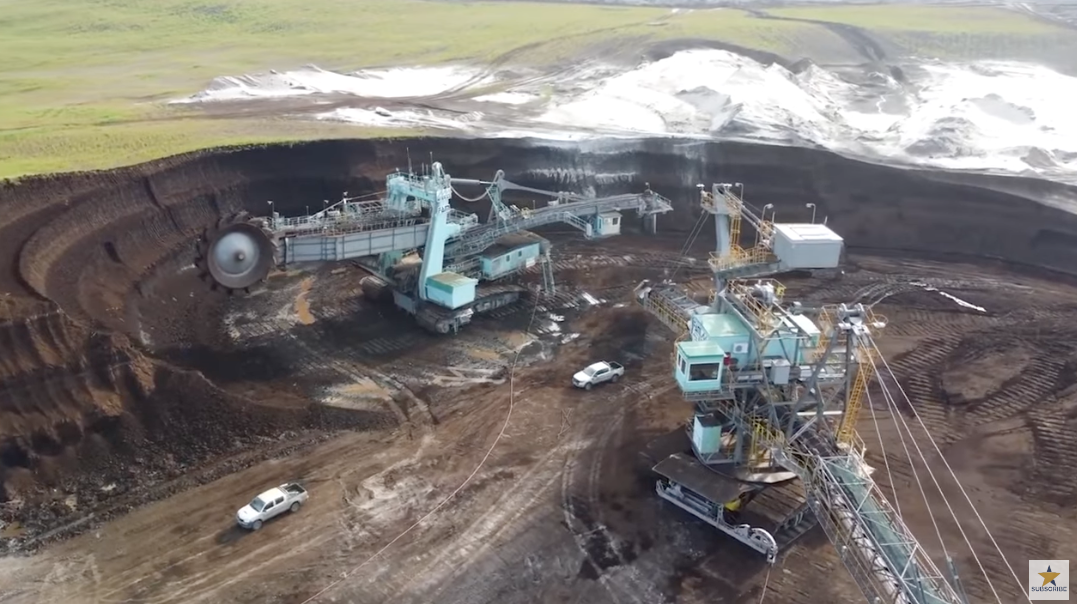Latest News

Photo: Screenshot via SSPI Smarter Mining video.
Do you ever pause to consider what’s behind the everyday world you inhabit? Have you wondered who built the bridge you are driving over, what’s going on inside your phone or computer, and where the gold in your jewelry comes from?
I like to pause while walking through airports. The next time you travel, stop to look out those big windows at the airfield. What will you see?
Well, yeah – airplanes. Lots of them. But what you are really looking at is billions of dollars of sophisticated capital equipment, most of it loaded to the brim with highly explosive fuel. And consider this: nothing bad happens. The TSA agent may annoy you, your flight may be overbooked and the next delay may send your blood pressure spiking. But where it counts, you are the recipient of the kind of miracle that happens when we decide a problem has to be solved.
The same is true of that gold or silver in your jewelry, the bridge you are driving over, the computer on your desk and the phone in your pocket or handbag. They started out as dirt. Literally. Now they are transporting you, housing you, decorating your life and helping you earn a living.
The Value of Dirt
The dirt in question is rich in mineral ores. We pull 18 billion metric tons of them from the earth every year. Iron ore becomes steel. Calverite produces gold and silver comes from argentite. Electronics need rare earths with names like terbium, lanthanum and neodymium.
Getting them out of the ground is hard, risky work. Companies invest millions before filling the first truckload of ore. Keeping the minerals moving takes never-ending attention to safety, efficiency and productivity. That’s why the mining industry is investing billions in making mines smarter with Internet of Things and asset tracking technology.
All that smart technology has to be connected. And that’s a challenge. Most mines operate in places too remote for terrestrial telecom. Satellite communications is the obvious alternative, but meeting the needs of a major mining operation located far from civilization? That’s a heavy lift.
Tunnels and Pits
Speedcast is one of the companies in our industry doing the lifting. It brings advanced connectivity to mining sites in some of the world’ most out-of-the-way places, from the Outback of Western Australia to the jungles of the Democratic Republic of Congo. The company builds and powers networks in tunnels, across vast open pits, in offices and crew quarters, using technologies from Wi-Fi and private LTE to point-to-point microwave and push-to-talk radio. It all has to mesh together and integrate with Geostationary, Medium Earth-Orbit and Low-Earth Orbit (GEO, MEO and LEO) satellites to provide long-haul connectivity to the enterprise network and its services.
Speedcast operates fiber-interconnected teleports and data centers around the world, but the biggest contributor to redundancy and diversity are network management systems that automatically manage global networks and seamlessly blends multiple transmission paths into a single, optimized secure WAN.
All that network technology makes it possible for mines to control autonomous trucks and trains and remotely monitor their tire pressure and engine condition. They run automated drills and keep watch over air quality and dust concentration. They track workers and assets by GPS and site beacons, conduct video surveillance and analyze it with AI, monitor thousands of IoT sensors, and enable remote operations and control of dangerous machinery.
In the smart and connected mine, managers can see and understand the challenges their miners face. IoT systems share data with experts far away, who can advise on tough problems. Automated drills, trucks and trains work day and night, keeping people out of harm’s way.
And that saves lives. In the last decade, fatal accidents at mines around the world declined by nearly 20 percent even as miners worked 7% more hours. Safer mines are greener, too, because good data and drone technology helps them better manage mining waste. And when miners are off the clock, broadband brings them entertainment and connection to their homes.
So, inside your phone or computer, the bridges you cross, and the ring on your finger are a vast and complex industry full of risk both financial and personal. We demand that the minerals keep moving, and satellite plays a critical role in solving the problems that could slow them down.
 Robert Bell is executive director of Space & Satellite Professionals International. SSPI produces the Better Satellite World campaign, which dramatizes the immense contributions of space and satellite to life on Earth. More at www.bettersateliteworld.com.
Robert Bell is executive director of Space & Satellite Professionals International. SSPI produces the Better Satellite World campaign, which dramatizes the immense contributions of space and satellite to life on Earth. More at www.bettersateliteworld.com.
Get the latest Via Satellite news!
Subscribe Now